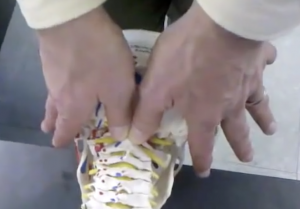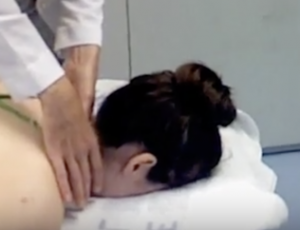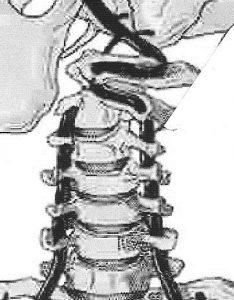Screening tests, more questions than answers!
Screening tests, more questions than answers?
A whole series of different screening proposals are being used in musculoskeletal medicine for all sorts of different reasons. The offer goes from red flag screening to sports related pre-participation screening. Many of the screening tests are though not universally accepted and conflicting evidence is frequently found in literature (2).
Below I’ve listed up some of the proposed screening procedures in musculoskeletal physiotherapy:
-red flag screening
-pre-manipulative screening
-functional movement screening
-scoliosis screening program
-screening for developmental dysplasia of the hip
-sports activity related screening for activity related physical suitability
-2-minute orthopedic screening evaluation
-return to play screening
-pre-participation orthopedic screening evaluation
-screening tests in musculoskeletal physiotherapy according to the principles of the Maitland concept.
Screening tests in the Maitland concept are used to identify potential contributing factors to the main problem of the patient. In general, it is a “quick procedure” to test, rule out or rule in, neighboring areas to the main problem, generally those areas who have direct neurophysiological, biomechanical and/or anatomical relationships.
Following the line of thought this, obviously, implicates that the clinician is assuming that there is a distinct peripheral driver for the patient’s problem. Several other studies assume that more complex drivers and multidimensional mechanisms may play an important role in a whole range of musculoskeletal problems (12, 13,14,15,16, 17,18).
Converting screening into a “standard” procedure and looking at all times for distinct reasons or peripheral causes for pain or movement restrictions would therefore be in conflict with contemporary pain science.
The possibility of using a test procedure which allows us to define (to rule out or to rule in) if for example the knee, the hip or the cervical spine are, or are not, potential drivers of the patient’s symptoms and show complete possession of function would be ideal in peripheral/structural musculoskeletal evaluation.
The question is not only if such ideal combination of tests exist, but we should also reflect upon the fact that test battery results may be flawed by inconsistent execution of the provider and variability of the receiver (7,8). Few orthopedic tests have shown to be sufficiently selective for diagnostic purposes (2). The reproduction of “symptoms and signs”, may be biased (7,8) and false positives may be frequent findings.
Treatment of the screened area with subsequent reassessment may show that there is a favorable change in symptom behavior and in function but that does not mean that the screened area is involved and that treatment was an undisputed success (9) since uncontrolled effects may occur. Again, this would contrast with contemporary knowledge in pain science since observational bias and placebo/nocebo effects are potential confounders (7).
The ideal “peripheral screening” diagnostic test must be sensitive and specific and be able to correctly identify patients who have and do not have the condition, so rule out (sensitivity) and those who have the condition, therefore rule in (specificity).
There must be research available that shows that the tests characteristics meet what they promise. Often though, research studies on screening procedures in musculoskeletal rehabilitation show conflicting results (3,4).
Some combined movement tests, like the upper cervical flexion rotation test, seem to have past scientific scrutiny and are generally accepted as a a test with a high evidence support score for diagnosing upper cervical spine (most likely C1-2) components to headache (2). Upper cervical spine accessory movements assessing joint mobility have, for example, a moderate support score (2).
Sometimes we can encounter evidence of personified execution of cervical spine techniques like PAIVM’s (2), where it seems to become more a kind of pushing on the spine instead of trying to move the head on neck and create a physiological movement of the spine together with an accessory movement as we in the IMTA advocate.
personified executions of passive accessory intervertebral movement testing in the internet. Note the lack of follow up around the neck therefore the paivm most likely becomes a kind of push and not a head on neck, neck on neck or neck on trunk movement.
Video below: IMTA proposal for passive accessory intervertebral movements… note the handgrip for a unilateral PA allowing to make a head on neck movement together with an accessory movement at C2 in this case. Please look at video below to note the head on neck movement!
[video width="720" height="720" mp4="https://www.imta.ch/wp-content/uploads/2017/10/IMG_9471.mp4"][/video]
But let’s have a closer look at what is generally chosen for in the Maitland concept when we screen the upper cervical spine. One of the screening tests for the upper cervical spine is the upper cervical quadrant. The upper cervical quadrant is a combination of upper cervical spine extension, upper cervical spine rotation and upper cervical lateral flexion to the same side. The test is thought to screen for so called “functional corners” and the test is looking for signs of movement restriction and patient’s symptom reproduction. One of the main problems is though that active, or functional movements, are not at all the same as passive movements.
“Try to go into full upper cervical extension and to actively rotate your neck to one side in the upper cervical spine and after that actively sideflex your neck in the upper cervical spine to the same side, you will notice that this is a complex, highly coordinative task and foremost, virtually impossible. This means that the so called functional corners of the upper cervical quadrant are very hard to reach if at all, at least not actively, not in most humans, and not during most regular required activities”.
A positive test would be a test where there is reproduction of the patient’s problems and/or the reproduction of movement restrictions, also the reproduction of comparable signs and symptoms would be considered a positive test. The test is generally proposed after the active movements are found to be ok and after directional general or localized overpressure has been applied.
Some questions remain unanswered though:
-Does the test have diagnostic properties? what is exactly being tested? ---What is the impact on the neck structures?
-what level is, levels are, being tested? Which structures are especially at fault? Is there any consistency in the test in terms of the structures and biomechanics at fault? Is it a diagnostic test?
-Is it a safe test? for example for the cervical spine arteries (10)? Or when upper cervical spine hypermobility is an issue? Or when there is a history of cervical spine trauma?
-from what age on can I apply the test? Can someone be simply too old or simply too young to have the test applied? Is there an age limit in applying the test?
-is the test criteria related to the habitual amount of loading of the patient in the tested area? Therefore, no application of the upper cervical quadrant in patients who do not load their spine in so-called upper cervical quadrant position?
-does the test meet functional request? And if yes for who? Can we identify specific patient categories where this test procedure is indicated?
-can we identify patient categories where this test procedure is contraindicated?
-if we feel that it is indicated to test in combined positions, why than screening only in that particular combination in extension and not in flexion?
-is there any scientific research available on the upper cervical quadrant test? What is normal, what is abnormal?... obviously, the answer is no!
-is there consistency in the application of the test. if the test is applied is there intra-tester validity or is there inter-tester validity?
-if you want to test for symptoms and signs in the upper cervical spine, would it be wise to do, on beforehand, at least a thorough palpation, with passive physiological testing as well as passive accessory movement testing in functional movement combinations?
-Would it be wise to apply palpation (physiological and accessory movement restrictions and symptom reproduction), if required, after the active movements and before doing any kind of multidirectional physiological screening with overpressure, because that simply would mean less impact, therefore presumably, more safety in the neck?
-how about the possibility of producing false positive results with multidirectional movement testing plus overpressure on persons who are not used to be screened and loaded in the abovementioned way? (by the way… again… who is? Probably that one patient who does Greek-Roman wrestling or something similar to that)
I definitely believe that there is logic in applying progressive loading. A possible scale of progressive loading would start with extensive active movement exploration and individually planned functional, active, forms of testing. If believed necessary and indicated, you might apply some degree of overpressure. After that I would do thorough palpation plus passive physiological and passive accessory assessments (looking for altered movement patterns and possible symptom reproduction). If there still would be an indication or a functional need to push the testing any further do movement palpation in different combined and, for the patient, functional movement positions. For most patient’s this would be, as far as I am concerned more than enough. Maybe, in some exceptional cases, I would even test further within the realm of sports related testing where the “head on neck” movements could be particularly stressed.
An ideal screening test would be a noninvasive procedure, that is to say, the test procedure in itself would not put the patient in any kind of potential danger. The screening test must identify a functional problem that is clinically significant and that, if left untreated, will cause significant morbidity. The ideal screening test must be for a functional problem in a pre-clinical or pre-symptomatic stage and the functional problem should be involved in the patient’s main problem. Finally, the functional problem, if treated, must have a definite long term favorable outcome on the original main problem of the patient.
Final reflections and suggestions:
- Although screening tests are being proposed as adaptable to individual needs there is a potential tendency to generalize the screening procedure.
- There is no research data available on the upper cervical quadrant nor is there on the lower cervical quadrant, therefore identical reasoning could be adopted for the lower quadrant.
- The lower quadrant may be slightly more functional, especially for looking over the shoulder (rotation and extension or rotation and side-flexion) but adding overpressure in the combination of extension, side flexion and rotation to the same side is without doubt a very high impact test and may create large amounts of false positive symptoms and protective reactions.
- A similar test like the “Spurling” test is a test in side flexion where axial compression is added. Some authors include ipsilateral rotation and others include extension. The “Spurling” test has specificity but no sensitivity and is not recommended as a screening test (2). The “Spurling” test has moderate utility support score for testing nerve root pain (2).
- Again, if screening is indicated in combined positions or so-called "functional corners", why then only the lower quadrant starting in extension and why no combinations in other movement directions?
- There is no data available on safety issues as regard to quadrant testing, there are no indications on age or loading related issues nor on possible contraindications.
- It is likely that a negative quadrant test (sensitivity), although not supported by research, is able to exclude the upper cervical spine as a peripheral driver of symptoms but a positive test (specificity) should always be seen in the context of the amount of loading on the cervical spine in a person who might never use this combined position and in the light of contemporary pain science.
- Therefore, I would suggest to insert palpation of the neck including palpation of physiological and accessory movement directly after the active movement and before any other form of passive combined movement testing which includes overpressure.
- If indicated, do the accessory movement palpation in progression towards functional corners.
- If all kinds of active movements plus overpressure as well as movement palpation in all functional and combined positions is found to be without symptoms and signs is there is still a need and an indication to take the test further?
Keep in mind that no sports related, return to play, test can be ideal since the emotional context (the stadium, the crowd, the opponent, the press etc.) of the event is lacking. This translated to the more “normal” therapist – patient interaction might mean that contextual factors are potentially quite different in the treatment setup than they are in the patient’s daily life. Observations made in clinical set-up may therefore have their limitations.
With every patient, we should carefully plan what and how to execute screening.
At all times we should be alert for the possibility of observational pitfalls.
Screening tests, in general and if chosen for, should be adapted to individual needs like specific loading, specific activities of the patient, age and pathology related issues and foremost should guarantee safety.
1. Michaeli A. Dizziness testing of the cervical spine: Can complications of manipulations be prevented? Physiotherapy Theory and Practice An International Journal of Physical Therapy, Volume 7, 1991 - Issue 4
2. Cook C, Hegedus E. Orthopeadic physical examination tests, an evidence based approach. Second edition, 2013
3. Simpson R. et al, Accuracy of spinal orthopaedic tests: a systematic review, Chiropr. Osteopt 2006
4. Shipman S, Helfand M, Nygren P, et al. Rockville (MD): Screening for Developmental Dysplasia of the Hip: A Systematic Literature Review for the U.S. Preventive Services Task Force, Agency for Healthcare Research and Quality (US); 2006 Mar.
5. Wingfield K. et al, Preparticipation Evaluation: An Evidence-Based Review, Clinical Journal of Sport Medicine, 2004
6. Bahr R., Why screening tests to predict injury do not work— and probably never will...: a critical review, Bahr R. Br J Sports Med 2016;50:776–780. doi:10.1136/bjsports-2016-096256
7. Walter R., Palpation…passive movement exploration, can you feel it? IMTA Blog 2017
8. Walter R., A critical look at structural differentiation, IMTA Blog 2017
9. Meakins A. the sports physio Blog, Ch, ch, ch, changes, march 2017
10. Mitchell J.A., Changes in vertebral artery blood flow following normal rotation of the cervical spine. J. Manipulative Phys. Ther., Jul-Aug;26(6):347-51. 2004
11. Stanton TR. et al, Feeling stiffness in the back: a protective perceptual inference in chronic back pain, Scientific Reports 7, Article number: 9681(2017)
12. Bretischwerdt C, Rivas-Cano L, Palomeque-del-Cerro L, Fernandez-de-las-Penas C and Alburquerque-Sendin F. Immediate effects of hamstring muscle stretching on pressure pain sensitivity and active mouth opening in healthy subjects. J Manipulative Physiol Ther 33: 42-7. 2010
13. Espejo-Antunez L. et al, Immediate effects of hamstring stretching alone or combined with ischemic compression of the masseter muscle on hamstrings extensibility, active mouth opening and pain in athletes with temporomandibular dysfunction, Journal of bodywork and movement therapies, 2015
14. Nijs J. et al Thinking beyond muscles and joints: Therapists’ and patients’ attitudes and beliefs regarding chronic musculoskeletal pain are key to applying effective treatment, Manual Therapy 18 (2013) 96e102
15. Hoffmann T. et al, Clinicians’ Expectations of the Benefits and Harms of
Treatments, Screening, and Tests A Systematic Review, JAMA Intern Med. jamainternmed.2016.8254 Published online January 9, 2017.
16. Tracey I., Getting the pain you expect: mechanisms of placebo, nocebo and
reappraisal effects in humans, Nature medicine 16, Number 11, November 2010
17. Rabey M. et al, Reconceptualising manual therapy skills in contemporary practice, Musculoskeletal science and practice, February 2017
18. Kuppens K. et al, Sensory processing and central pain modulation in patients with chronic shoulder pain: A case-control study. Scand J Med Sci Sports. 2017 Oct 4












Comments